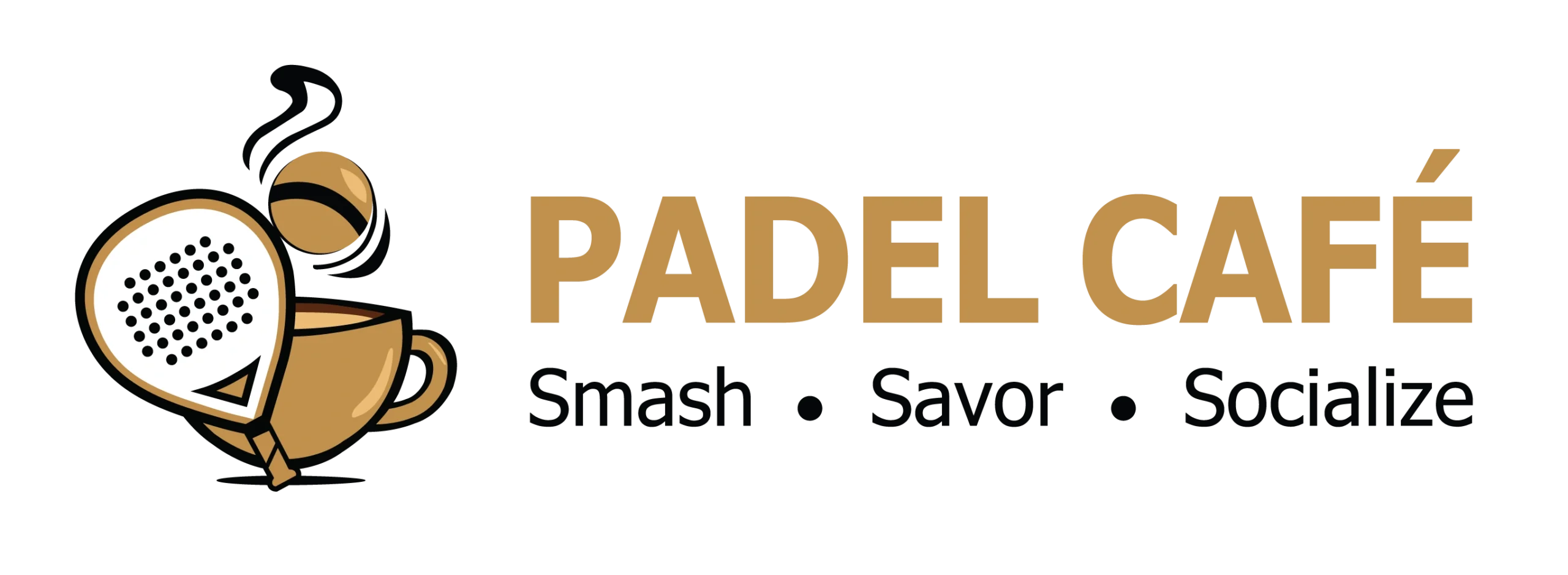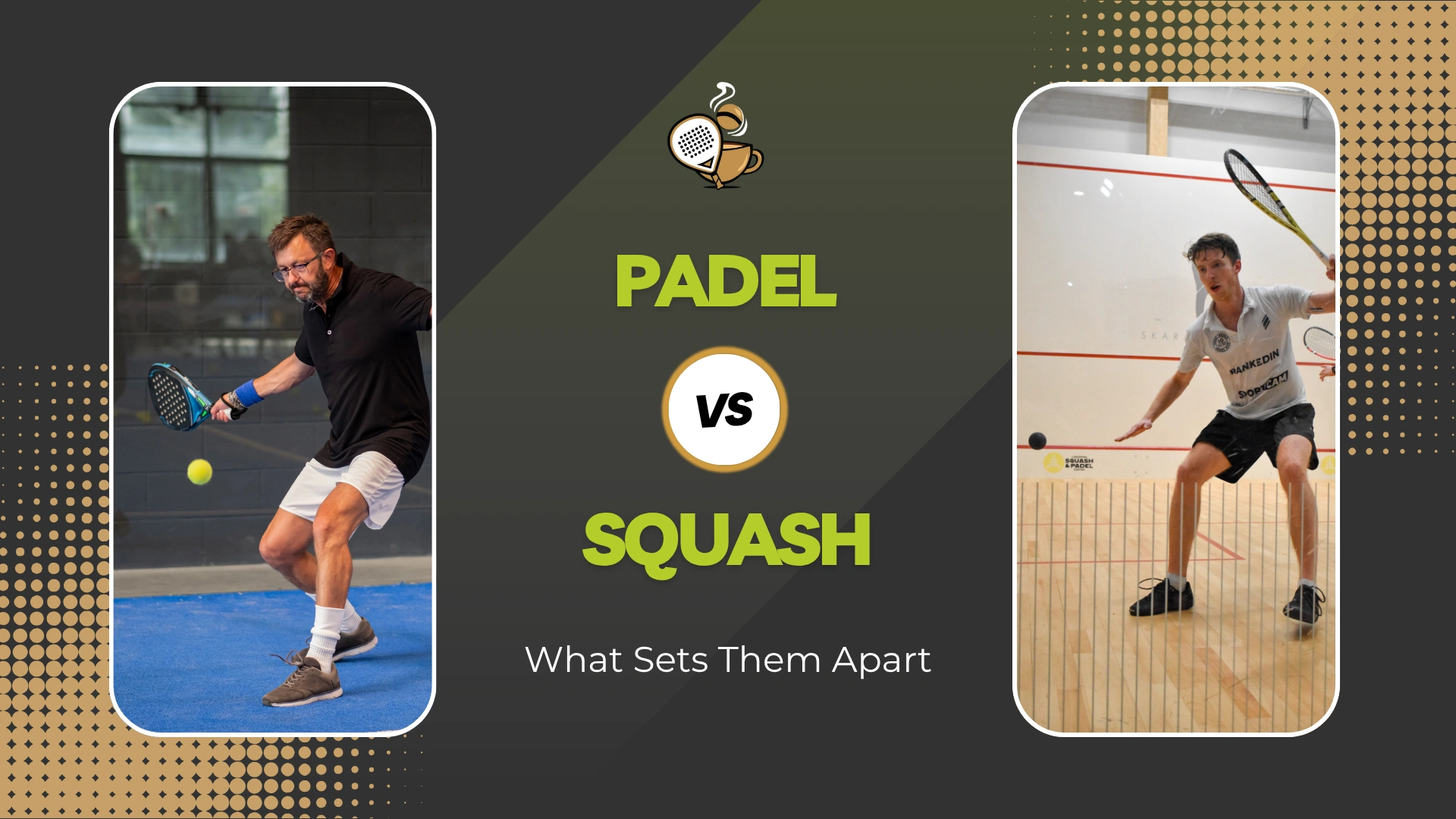Racket sports have long been popular among the sports community. These games have taken the world of fitness and leisure by storm. The three most popular in this regard are padel, tennis, and squash. But today we’ll be talking more about padel and squash.
The two racket games stand as close kin, with squash being the elder one. Padel, the younger game, contains elements of squash. Both sports are high-paced, competitive, and great for fitness. But they are supported by different sports communities and demand different fitness levels.
True, both are racket-based games, but there’s a lot that is unique to each of the two games. Let’s break down the key differences between padel and squash and learn what sets the two apart.
Padel vs Squash: A Glimpse at the Differences
Feature | Padel | Squash |
Court Type | Outdoor or semi-indoor with glass and mesh walls | Fully enclosed indoor court |
Court Size | Larger, 20m x 10m | Smaller than padel, approx. 9.75m x 6.4m |
Number of Players | Always doubles (2 vs 2) | Primarily singles (1 vs 1), doubles also played |
Walls in Play | Yes – glass and mesh walls used strategically | Yes – all four walls are part of gameplay |
Racket Type | Solid, stringless, with holes (shorter and rounder) | Stringed, longer, similar to tennis racket |
Ball Type | Pressurized ball, but softer | Small rubber ball, low bounce unless warmed |
Scoring System | Tennis-style (15-30-40, best of 3 sets) | Rally-point scoring to 11 (win by 2), best of 3 or 5 games |
Learning Curve | Easy to learn, beginner-friendly | More technical, requires practice |
Social Aspect | Highly social, team-based | More individual, competitive |
Best For | All ages, casual players, social fun | Fitness enthusiasts, competitive solo players |
1.The Walled Court
The very area where the game is played has a significant impact on the gameplay.
The Court Walls
Padel courts are mostly outdoors, yet some also play indoor and semi-outdoor courts. The choice between indoor vs outdoor courts is based on personal preference and other factors. No matter the location, this game’s courts are walled, enclosed with glass and meshed walls. These walls are a major part of the game—the players strategically use the walls as the ball bounces against them once.
On the other hand, squash is always played indoors, within four walls. Even here, the walls are part of the gameplay. The ball can hit any wall; sharp reflexes and precise ball control is all that’s required to win the game.
Court Size
Another major difference between the courts of the two racket games is the size of the court. Padel courts are larger than those of squash, offering sufficient space for comfortable footwork and mobility.
- Padel court size: 20m x 10m
- Squash court size: 9.75m x 6.4m
2. The Racket and the Ball
Though a relative game, the padel gear significantly differs from that of squash. One look and you can see the difference.
Rackets
Padel rackets are solid-faced, stringless, and perforated. They’re shorter, offering better wrist control. The racket shape is ideal for striking the ball arriving at slower speeds.
The squash rackets have their resemblance to tennis rackets. They have string beds, offering higher tension and increased potential to rebound.
Balls
Padel balls are made of a rubber core with an outer felt. These are less pressurized, which reduces ball speed, making it easier to control.
Squash balls are smaller than those of padel. These are also made of rubber and tend to bounce higher as the ball heats up during the game.
3. Scoring and Match Structure
The scoring system of the game is another major factor that makes a difference between two racket-based games.
Padel rules for scoring are like those of tennis. The matches are played as the best of three sets, with a scoring system for each game being: 15-30-40. This makes padel scoring easier to understand for anyone who has watched or played tennis before.
Squash uses a Point-a-Rally Scoring (PARS) system. Each rally is played till 11 points normally, but you must win by two points from your opponent, e.g., 11-9 or 13-11.
4. Team vs Solo Play
This is another fundamental difference shaping the entire game structure of tennis and padel.
Padel is mostly played in doubles, two against two. This format makes it an accessible and all-inclusive game. Teamplay also promotes social engagement, together with thrilling sports fun.
On the contrary, squash is usually played in singles (one-on-one). The game is more intense, requiring sharp reflexes and quick movements. Squash in doubles does exist, but it’s less common and is featured only in pro tournaments or club settings.
5. Learning Curve and Accessibility
One important factor that impacts the choice of the game is its learning curve.
Padel, being an all-inclusive sport, is an easy to learn game. No complex rules, compact courts, and long, sustainable rallies make the game fun to learn and play. It’s why today, many padel facilities have started padel clubs for kids as well.
On the contrary, squash takes a bit more time to master. The wall angles, smaller courts, speedy bounces, and extra sharp reflexes require extraordinary focus. So, squash often attracts more competitive and seasoned players.
6. Global Popularity
A strong community backs every sport, but its volume differs for each. According to the International Padel Federation (FIP), padel players across the world are now estimated to exceed 30 million. In fact, in Spain, this game is already the second most-played sport after football.
On the other hand, squash boasts over 20 million global players. It has strong roots in England, but presently, the game has also gained significant traction in Asia and Africa.
Final Verdict
Padel and squash both fall under the umbrella of racket sports and share fast-paced, competitive gameplay. However, they differ significantly in their format and experience. Squash is more intense and physically demanding, while padel emphasizes more on teamwork and strategy over power.
So, no matter if you’re drawn to the intensity of squash or the social atmosphere of the padel, there’s a racket sport for everyone!



0 Comments